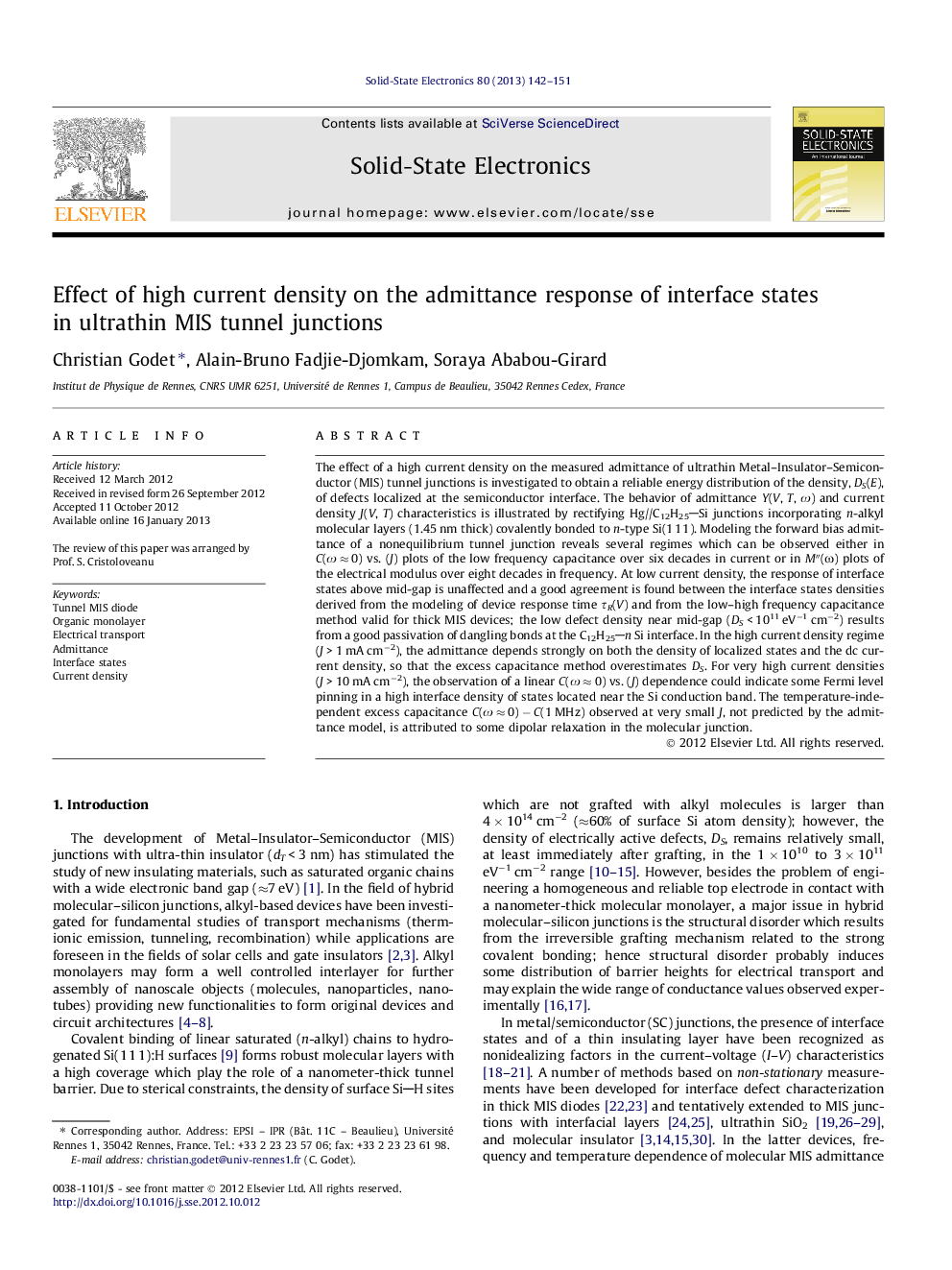| Article ID | Journal | Published Year | Pages | File Type |
|---|---|---|---|---|
| 748378 | Solid-State Electronics | 2013 | 10 Pages |
The effect of a high current density on the measured admittance of ultrathin Metal–Insulator–Semiconductor (MIS) tunnel junctions is investigated to obtain a reliable energy distribution of the density, DS(E), of defects localized at the semiconductor interface. The behavior of admittance Y(V, T, ω) and current density J(V, T) characteristics is illustrated by rectifying Hg//C12H25Si junctions incorporating n-alkyl molecular layers (1.45 nm thick) covalently bonded to n-type Si(1 1 1). Modeling the forward bias admittance of a nonequilibrium tunnel junction reveals several regimes which can be observed either in C(ω ≈ 0) vs. (J) plots of the low frequency capacitance over six decades in current or in M″(ω) plots of the electrical modulus over eight decades in frequency. At low current density, the response of interface states above mid-gap is unaffected and a good agreement is found between the interface states densities derived from the modeling of device response time τR(V) and from the low–high frequency capacitance method valid for thick MIS devices; the low defect density near mid-gap (DS < 1011 eV−1 cm−2) results from a good passivation of dangling bonds at the C12H25n Si interface. In the high current density regime (J > 1 mA cm−2), the admittance depends strongly on both the density of localized states and the dc current density, so that the excess capacitance method overestimates DS. For very high current densities (J > 10 mA cm−2), the observation of a linear C(ω ≈ 0) vs. (J) dependence could indicate some Fermi level pinning in a high interface density of states located near the Si conduction band. The temperature-independent excess capacitance C(ω ≈ 0) − C(1 MHz) observed at very small J, not predicted by the admittance model, is attributed to some dipolar relaxation in the molecular junction.
► High current and interface DOS effects on admittance of molecular MIS tunnel junction. ► Low frequency interface states capacitance C(ω ≈ 0) vs. J over six decades in current. ► Excess capacitance at very small current attributed to molecular dipolar relaxation.
